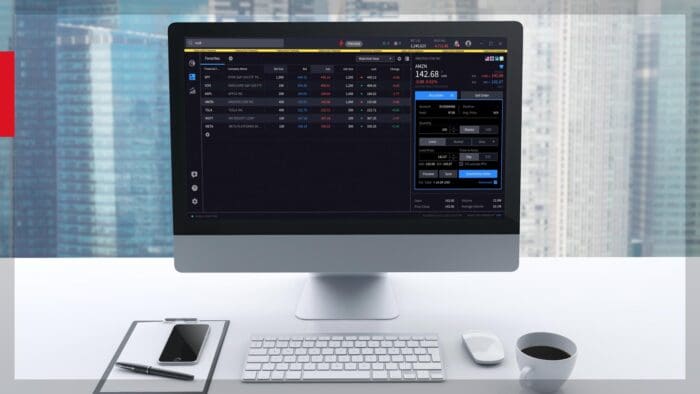The article “Stop Losses: Rethinking Conventional Wisdom” was originally posted on Robot Wealth blog.
How often have you heard someone say, “I use a stop loss to manage downside risk”?
You see this repeated so often that you could be forgiven for thinking it was some inviolable universal law.
But do stop losses really do what people think?
Let’s think this through together. And fair warning – what I’m about to say might make you uncomfortable. Especially if you’ve been using stop losses because it’s conventional wisdom (no judgement… everyone goes through this, including me).
Consider a scenario: You’re trading a statistical edge based on a sentiment factor that you think has genuine predictive power. Your signal says get long, so you follow it and buy.
Then the market drops. You’re down. You can’t help but wish you hadn’t taken the position.
But here’s the only important question:
Do you have any less edge now than when you put the position on?
Maybe. Maybe not.
But your P&L definitely doesn’t tell you that.
The only thing that matters is whether your signal says you still have an edge. Your signal is what gives you your edge in the first place.
So when you use a stop loss, you’re letting a signal with no predictive power (your P&L) override a signal that does have predictive power (your edge).
Which is a bit like ignoring your doctor’s advice because your Uber driver had a different opinion.
In fact, if your signal is still saying “be long” but you stop out of the position, you’re going to need to get that position back on at some point. Otherwise, what the hell is the signal even for?
The case for stop losses
All that aside, there actually is one case where a stop loss makes perfect sense.
That’s when your trade P&L is genuinely predictive of future returns.
And there’s a name for that scenario: trend.
Trend is simply past returns predicting future returns:
- If the market went up recently, it’s more likely to keep going up
- If the market went down recently, it’s more likely to keep going down
When you’re trading a trend system, negative P&L actually is a predictor of future negative returns. So in this case, a stop loss aligns perfectly with your edge rather than fighting against it.
But here’s the unfortunate reality: most markets don’t show much actual trending behaviour.
Crypto is an exception (as anyone who lived through 2017 or 2021 can attest). Some commodities have exhibited trend characteristics in the past, too.
But you wouldn’t just assume trend exists without evidence, would you?
Of course you wouldn’t.
But stops make the backtest better
“But Kris,” I can hear someone protesting, “my strategy backtests better with stop losses!”
That could mean one of two things:
- There’s a genuine trend that your strategy doesn’t account for. If so, you should dig into this, understand it, quantify it, and incorporate it properly into your trading strategy.
- You’re fitting to noise in historical data. In other words, you’ve created a strategy that works great on past data but will likely fail going forward.
I’ve seen far more instances of #2 than #1.
Now, I’m not saying stops are never helpful.
But using stops just because “that’s what traders do” without understanding if they actually complement your edge doesn’t make much sense.
Here’s what I recommend:
- Understand the source of your edge. If it’s trend, then stops make sense.
- If it’s not trend-based, be careful about arbitrarily cutting yourself off from your edge.
- Consider alternative position sizing approaches that don’t rely on binary stops.
- Test, but be sceptical of backtest results that seem too good to be true.
Disclosure: Interactive Brokers Third Party
Information posted on IBKR Campus that is provided by third-parties does NOT constitute a recommendation that you should contract for the services of that third party. Third-party participants who contribute to IBKR Campus are independent of Interactive Brokers and Interactive Brokers does not make any representations or warranties concerning the services offered, their past or future performance, or the accuracy of the information provided by the third party. Past performance is no guarantee of future results.
This material is from Robot Wealth and is being posted with its permission. The views expressed in this material are solely those of the author and/or Robot Wealth and Interactive Brokers is not endorsing or recommending any investment or trading discussed in the material. This material is not and should not be construed as an offer to buy or sell any security. It should not be construed as research or investment advice or a recommendation to buy, sell or hold any security or commodity. This material does not and is not intended to take into account the particular financial conditions, investment objectives or requirements of individual customers. Before acting on this material, you should consider whether it is suitable for your particular circumstances and, as necessary, seek professional advice.
Disclosure: Digital Assets
Trading in digital assets, including cryptocurrencies, is especially risky and is only for individuals with a high risk tolerance and the financial ability to sustain losses. Eligibility to trade in digital asset products may vary based on jurisdiction.
Disclosure: Order Types / TWS
The order types available through Interactive Brokers LLC's Trader Workstation are designed to help you limit your loss and/or lock in a profit. Market conditions and other factors may affect execution. In general, orders guarantee a fill or guarantee a price, but not both. In extreme market conditions, an order may either be executed at a different price than anticipated or may not be filled in the marketplace.














Join The Conversation
For specific platform feedback and suggestions, please submit it directly to our team using these instructions.
If you have an account-specific question or concern, please reach out to Client Services.
We encourage you to look through our FAQs before posting. Your question may already be covered!